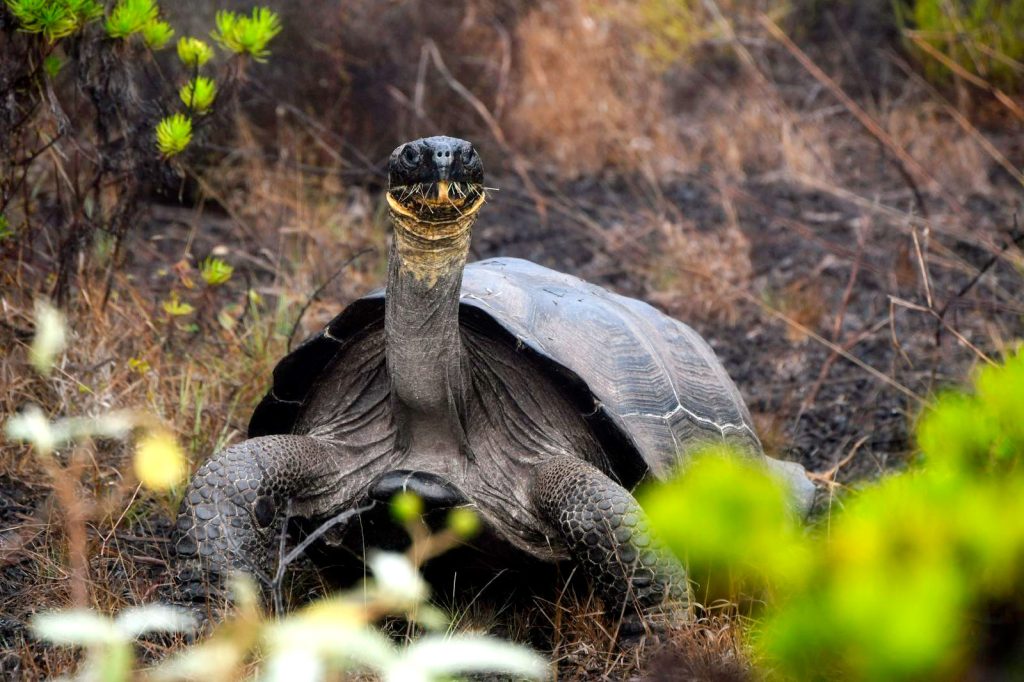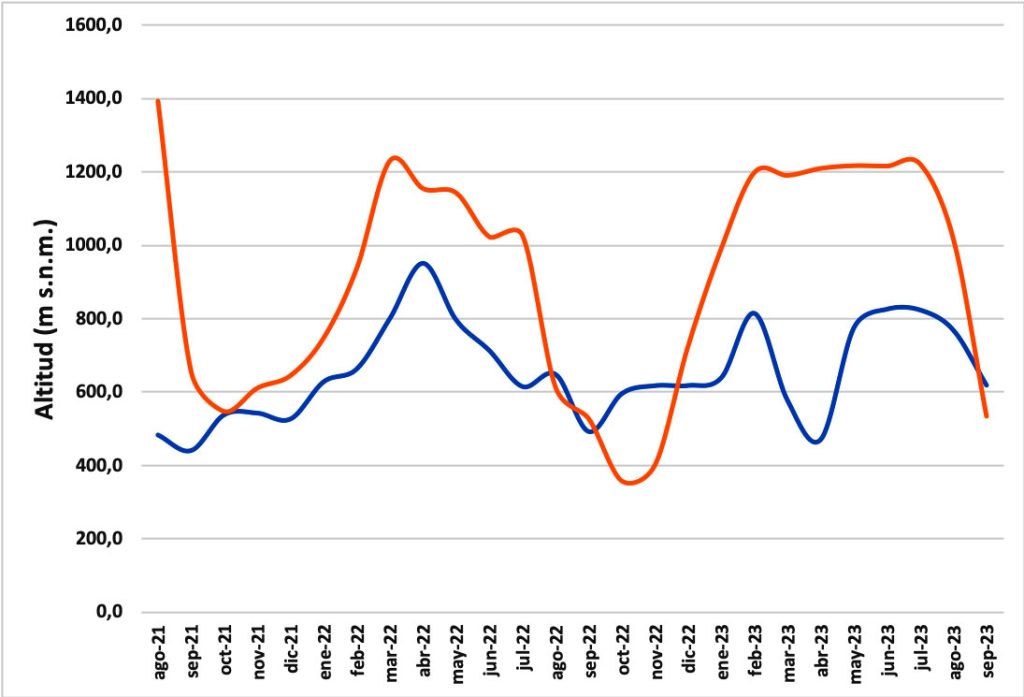A landmark two-year study
In a pioneering study, launched in August of 2021, Galapagos Conservancy teamed up with the Galapagos National Park Directorate to monitor the migratory pattern of giant tortoises on Wolf Volcano. Wolf Volcano is the highest peak within the archipelago, at 5,600 feet. Three male and three adult female tortoises were fitted with state-of-the art satellite trackers.
The two-year study shed light on the behavior of these animals by taking into consideration seasonal variations such as rain, food availability, and Wolf Volcano’s extreme temperature swings. The study considered other biological rhythms such as nesting times.
Satellite tracking data is a great tool for guiding conservation efforts. The data paints a vivid image of how tortoises adapt to the varied altitudes at Wolf Volcano and relate to their surroundings.
Remarks from the Slow Lane
These tortoises migrate between nesting zones in arid areas and feeding areas at higher altitudes, despite their slow pace. The seasonality of Galapagos directly influences their movements, but climate changes are rewriting the age-old migration stories, casting shadows over the future survival and well-being of the species.

©Jorge Carrión / Galápagos Conservancy
The giant tortoises are more than just wanderers. They are also diligent gardeners. By eating fruits and plants, giant tortoises help to spread diverse flora on the Galapagos Islands.
Dr. Jorge Carrion is our Director of Conservation and he pointed out the domino effect that their slow movements have on the ecosystem. Darwin’s Finches eat parasites on the skin of tortoises and their shells. Tortoises also influence the structure and distribution of other species in the landscapes they rest on.
According to the study, tortoises living on Wolf Volcano are capable of covering distances up to 12 miles. Fascinatingly, males follow different routes than females. The males will go to higher altitudes up to 3,940 ft. and stay there for a longer time, requiring more food to sustain their larger frame. Females, on the other hand, tend to stay between 2,625 and 2,950 ft.
Conservation Implications
It is crucial to understand these behavioral nuances, and the ecological dynamics that govern them. This is especially true in an age of increasing human intervention and climate change. It is vital to ensure that these majestic creatures have unobstructed nesting areas and migration routes.
This study reveals the complex tapestry that is the Galapagos giant turtles’ daily life. It highlights their crucial role in maintaining the ecological balance of the archipelago, and emphasizes the need to protect the Galapagos ecosystem.

©Jorge Carrión / Galápagos Conservancy



